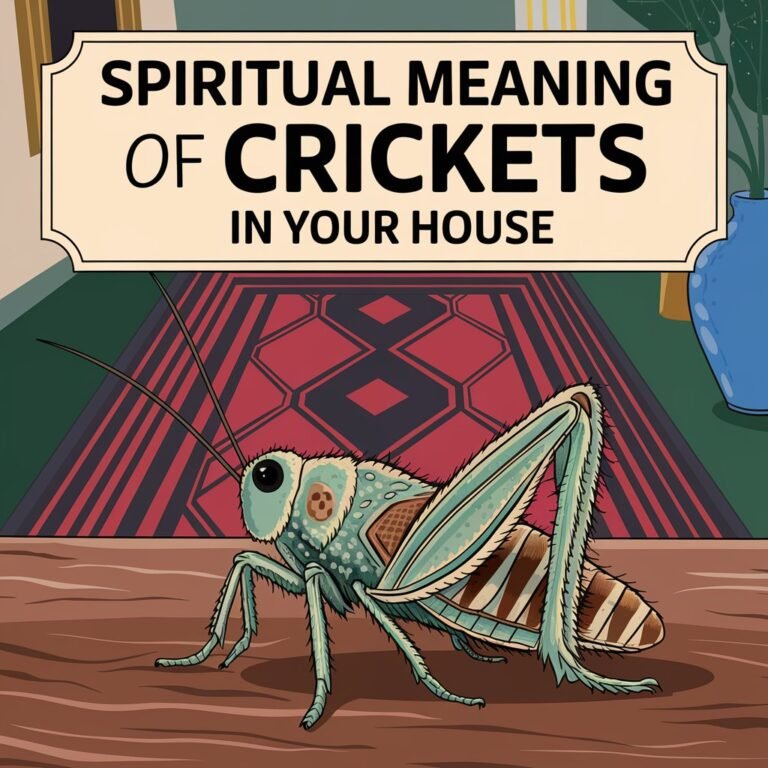Om Symbolism Meaning: Uncovering the Spiritual Significance
When you see the Om symbol, you're likely aware of its spiritual significance, but do you know the depth of meaning behind it? This sacred symbol, often chanted in meditation, represents the harmony of the universe and the interconnectedness of all things. Its structure, rooted in sacred geometry, signifies unity and wholeness. But there's more to the Om symbol than meets the eye. As you explore its history, symbolism, and applications in various spiritual traditions, you'll begin to uncover a profound language that can transform your perspective and connect you with the universe on a deeper level.
A Quick Overview
- The Om symbol represents the harmony of the universe, reflecting the balance of creation through its structure and sacred geometry.
- The symbol's circular shape signifies unity and wholeness, while the bindu represents the infinite and the divine.
- Chanting Om expands one's sense of self, embracing the interconnectedness of all things and accessing deeper recesses of being.
- The Om symbol holds a revered place in both Hinduism and Buddhism, representing the infinite, the eternal, and the primordial sound of the universe.
- The Om vibration is a tangible, quantifiable force that synchronizes brainwaves, harmonizes the body, and affects the space around the practitioner.
Origins of the Om Symbol
One of the most ancient symbols in Eastern spirituality, the Om, has its roots in Hinduism, dating back over 5,000 years.
You're likely familiar with the Om symbol, but have you ever stopped to ponder its origins?
The Om is deeply rooted in ancient Hindu scriptures, where it's mentioned in the Upanishads and the Rig Veda.
These sacred texts hold the key to understanding the mystical origins of the Om.
As you explore into the history of the Om, you begin to realize its significance in Eastern spirituality.
The symbol is said to represent the divine, and its pronunciation is believed to hold the power to connect you with the universe.
In ancient scripts, the Om is often depicted as a combination of three Sanskrit letters: A, U, and M.
These letters hold deep meaning, representing the three states of consciousness: waking, dreaming, and deep sleep.
Symbolic Representation of Om
As you've gained insight into the origins of the Om symbol, you're now ready to unravel the layers of its symbolic representation.
At its core, the Om symbol embodies the harmony of the universe, reflecting the intricate balance of creation. Its structure is rooted in sacred geometry, with each curve and line representing the interconnectedness of all things.
The symbol's circular shape signifies unity and wholeness, while the bindu (the dot above) represents the infinite and the divine.
In this sense, the Om symbol serves as a visual representation of the ultimate reality, transcending the boundaries of space and time.
As you probe deeper into its meaning, you'll begin to recognize the symbol's profound impact on your spiritual awakening. It invites you to look beyond the surface level of existence, to explore the mysteries of the universe and your place within it.
The Om symbol becomes a gateway to higher states of consciousness, guiding you toward a deeper understanding of yourself and the world around you.
- A GIFT OF POSITIVE INFLUENCE ON DAILY LIFE: The Goddess Of Flame Aromatherapy Candle is more than...
- AROMATHERAPY CANDLE − Made of Natural Coconut Soybean Wax (SGS and MSDS Report available - No...
- Natural soy 6 oz candle for cleansing negative energy
- Includes Sage, Rose, Lavender and Essential Oils in Every Candle
- 7 Chakra Crystal Candles Set: Each candle includes chakra tumble stones giving you the most healing...
- Variety of Unique Aromas: Choose from 7 different aromatherapy scents and a wonderful selection that...
- SALT 84 beautiful selenite candle holder is the perfect addition to any room. It has a unique and...
- The holder is made from pure selenite crystal, which has healing properties and is known for its...
- ✅ LUXURIOUS CRYSTAL INFUSED CANDLES - All Candles Are 3.5 Once White Sine Jar with gem and...
- ✅ Charming and Unique - Indulge yourself or someone special with these Amethyst, Lazurite, and...
The Power of Om in Meditation
As you continue to chant Om, your sense of self expands, embracing the interconnectedness of all things.
Your meditation practice becomes a sacred ritual, a celebration of the divine within you. You begin to see the world through the lens of unity and oneness, recognizing that everything is intertwined.
In this state of heightened awareness, you access the deepest recesses of your being, uncovering hidden truths and insights.
The power of Om in meditation becomes a catalyst for personal growth, transformation, and spiritual evolution. As you integrate this practice into your daily life, you'll find that the benefits of Om extend far beyond the meditation cushion, infusing every aspect of your existence.
Om in Hinduism and Buddhism
Delving into the rich tapestry of Eastern spirituality, you find that the Om symbol holds a revered place in both Hinduism and Buddhism.
As you explore these ancient traditions, you begin to grasp the profound significance of Om as a mantra and sacred sound.
In Hinduism, Om is considered the primordial sound of the universe, representing the infinite and the eternal. It's often chanted at the beginning of sacred texts, such as the Upanishads and the Bhagavad Gita, to connect with the divine.
In Buddhism, Om is also an integral part of spiritual practice, often used in conjunction with other mantras to cultivate mindfulness and inner peace.
The mantra significance of Om lies in its ability to transcend the boundaries of language and culture, speaking directly to the heart of the practitioner.
As you integrate Om into your spiritual practice, you may find that it becomes a powerful tool for connecting with your own inner wisdom and the world around you.
The Science Behind Om Vibration
In the domain of spiritual exploration, your connection to Om extends beyond the sphere of sacred texts and mantras, resonating deeply within your being.
As you explore into the mysteries of Om, you'll discover that its vibrational essence intersects with the territories of science.
The humming sound of Om, often used in sound healing, creates a powerful resonance that synchronizes brainwaves and harmonizes the body.
This phenomenon is rooted in the principles of quantum physics, where vibrations govern the behavior of particles and energy.
When you chant Om, you're creating a vibrational field that affects not only your own being but also the space around you.
Research in quantum physics has shown that vibrations can alter molecular structures and even influence the behavior of subatomic particles.
This understanding bridges the gap between spiritual practices and scientific inquiry, revealing that the Om vibration isn't just a mystical concept, but a tangible, quantifiable force.
Om as a Universal Language
A single sound resonates across cultures, continents, and time – Om.
As you explore into the mysteries of Om, you begin to realize that it transcends linguistic and geographical barriers, speaking directly to the soul.
This sacred sound has been a cornerstone of various spiritual traditions, weaving a thread of unity across diverse cultures.
When you chant Om, you become part of a global tapestry, connected to all those who've ever uttered this sound.
Om embodies cultural unity, bridging the gaps between East and West, past and present.
Its vibration echoes through time, an affidavit to the timeless power of sound.
As you immerse yourself in the sonic harmony of Om, you start to feel an intrinsic sense of belonging – a sense of being part of something much larger than yourself.
This universal language dissolves boundaries, allowing you to connect with others on a profound level.
In the depths of Om, you discover a sense of oneness, a sense of unity that resonates deep within your being.
Spiritual Benefits of Om Chanting
Your spiritual journey takes a profound leap when you harness the transformative power of Om chanting.
As you resonate with the vibrations of this sacred sound, you awaken to a deeper sense of connection with the universe. Om chanting has a profound impact on your mental and emotional well-being, granting you mental clarity and emotional balance.
As you chant Om, you quiet the mind and access higher states of consciousness.
This clarity of thought allows you to navigate life's challenges with greater ease and purpose. Emotional balance is also achieved, as the vibrations of Om harmonize your inner world.
Your heart and mind align, and you experience a sense of unity and wholeness.
Regular Om chanting cultivates inner peace, compassion, and self-awareness.
It's a powerful tool to transcend ego boundaries and connect with the divine within.
As you embody the spirit of Om, you radiate love, light, and harmony into the world.
Incorporating Om Into Daily Life
As you weave the sacred sound of Om into your daily life, its transformative power seeps into every moment, fostering a deeper connection with the universe and yourself.
Start by incorporating Om into your morning routine, allowing its vibrations to set the tone for the day. Repeat it as a morning mantra, either silently or aloud, to calm your mind and awaken your spirit.
You can also use Om as a daily affirmation, repeating it whenever you need to center yourself or find balance.
As you go about your day, bring the energy of Om into your actions and thoughts.
Use it as a reminder to stay present and focused, and to connect with the world around you. You can chant Om while you work, drive, or engage in any activity that requires your attention.
Frequently Asked Questions
Can Om Be Chanted During Pregnancy for a Healthy Baby?
As you nurture your growing baby, chanting Om during pregnancy can be a beautiful way to foster prenatal bonding and support fetal development, allowing you to connect deeply with your little one's journey.
How Often Should I Chant Om for Stress Relief?
When seeking stress relief, you can chant "om" as often as you need to find mental clarity and inner peace. Start with short sessions, like 5-10 minutes, and gradually increase as you connect with your inner self.
Is Chanting Om Allowed in a Noisy Environment?
You're not limited by surroundings – even in a noisy environment, you can still practice urban chanting as a form of mindful meditation, cultivating inner peace and connection within the chaos that surrounds you.
Can Om Be Used as a Protection From Negative Energies?
As you seek refuge from negativity, you can harness the power of Om to create an energy shield, wrapping yourself in sacred armor that deflects harm and attracts positivity, nurturing your inner peace.
Is There a Specific Time for Om Chanting in a Day?
As you seek harmony, you'll find that chanting Om during morning meditation sets intentions and during evening reflection seals the day's experiences, allowing you to weave a tapestry of inner peace and balance.

Sofia Phillips is a renowned spirituality expert and the visionary behind SoulfulCreature.com. With a compassionate heart and an enlightened mind, Sofia embarks on a quest to guide others through the realms of spirituality. Her approach is deeply rooted in providing a nurturing and positive experience, allowing individuals to explore and grow in their spiritual journey.






